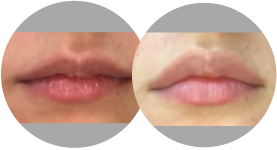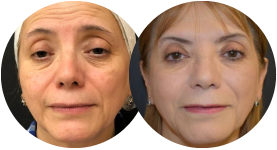Laser hair removal is a cosmetic treatment that removes unwanted body and facial hair. With just a few sessions of laser hair removal, you can avoid the hassle of shaving, waxing, and using depilatory creams. Not to mention, you won’t have to worry about the nicks, cuts, and burns that may come along with other treatments. If you want a solution that will leave your skin silky smooth without the harshness of other hair removal treatments, consider laser hair removal as your go-to solution!
As a doctor with specializations in anti-aging and functional medicine, Dr. Patricia Guevara-Channell can form a treatment plan that works for your skin with overall health in mind. Call Channell Wellness & Aesthetics in Rancho Cucamonga, CA at (909) 483-1236 or schedule a consultation online to get started today.
Read about our other procedures on our blog.
Contents
How Laser Hair Removal Works
Hair removal lasers are designed to target the melanin in your hair. Melanin is a pigment that determines the color of your hair and skin. And when melanin absorbs light energy, it becomes thermal energy that travels to the root of the hair. With this heat, the structure that creates the hair, the hair matrix, is damaged or destroyed. The stem cells of the hair matrix are then destroyed so that the strand of hair doesn’t come back, or comes back thinner. (1)
Nd:YAG Laser
All lasers emit units of light that are measured in microscopic wavelengths. The wavelengths of Dr. Guevara-Channell’s Cynosure laser can be changed from 755 nm to 1064 nm, depending on the setting. This treatment uses an Nd:YAG laser, meaning that it uses a crystal of the element neodymium to project light. This feature is known as dual-wave technology, which is helpful for treating patients of various skin tones. To get the best results from this kind of laser, you’ll need to know your exact skin type, which can be determined by the Fitzpatrick Scale, a scale that is usually used for determining skin cancer risk and sunscreen SPF recommendations.
What is the Fitzpatrick Scale?
This scale can give you an accurate idea of how your skin will respond to different lasers of different wavelengths. Before laser treatment, Dr. Guevara-Channell assesses patients to see what skin type they are: (2)
- Type I skin is very light and always gets sunburnt.
- Type II skin is white, but is able to tan at times.
- Type III is light olive skin that is able to tan easily.
- Type IV is olive skin that rarely gets sunburnt.
- Type V skin is brown that very rarely gets sunburnt.
- Type VI skin is dark brown skin that never gets sunburnt.
If your skin is somewhere between type III and VI, you have more melanin in your skin that is able to absorb more sunlight and provide skin protection against harmful UV rays. When it comes to laser treatments, you have a higher risk of developing post-inflammatory hyperpigmentation, which is when the skin tone becomes uneven. (2) The melanin in your skin may work to absorb laser light more so than the melanin in your hair, making laser treatment more challenging. The 1064 nm wavelength, a setting available on the Cynosure device, has been proven to be most effective for darker skin tones. The 755 nm wavelength is optimized for lighter skin tones and a wider variety of hair colors. (3)
Preparation for Laser Hair Removal
To get the best results possible from your laser hair removal session, you’ll have to keep your skin as healthy as possible. To best prepare for your treatment, you should follow specific guidelines:
- The sun emits UV rays that are damaging to your skin and can make your skin less resilient against lasers. Therefore, it is important to stay out of the sun and/or use a high-SPF sunscreen for 4 to 6 weeks before your treatment.
- Do not wax, pluck or use depilatory creams for at least 6 weeks leading up to your treatment. These types of hair removal treatments remove the hair follicles, so the laser can’t target the melanin within the hair.
- Do not bleach your hair before your laser appointment. Having lighter hair can make lasers less effective and may require more sessions than necessary.
- Some medications may make your skin more sensitive, so have Dr. Guevara-Channell review them and make adjustments as needed.
- Remove creams, lotions, or makeup thoroughly before your treatment.
- If you’ve had a cold sore in the treatment area before, you may need to be prescribed antiviral medication in order to reduce the risk of an outbreak.
- On the day of your appointment, you will need to shave so that the laser energy can effectively penetrate the hair bulb, a structure which contains cells that produce the hair itself.
- Be sure to wear loose fitting clothing around the treatment area so that it doesn’t irritate the skin.
Laser Hair Removal Procedure
For the first part of the procedure, a trained professional will clean the area and apply a cooling cream that will make the process more comfortable. If the patient requests, they may also receive topical anesthesia to further eliminate the risk of discomfort during the procedure. If you choose anesthesia, you will have to wait 30 minutes to one hour before it settles in and takes effect.
After this step, you will receive special glasses to protect your eyes from the laser’s light. The laser professional will place the handpiece onto your skin, applying one pulse of light to one area before moving to the next. The entire procedure only takes a few minutes; it is a short process if you have a small treatment area. The hairs that are affected the most are those that are in the anagen phase of their growth cycle- when the hair shaft is actively growing. Laser is most effective on these hairs because there is an abundance of melanin deeper within the skin and the hair shaft is still attached to the papilla, the structure that provides a blood supply to the root of the hair. (4)
Aftercare Instructions
After laser hair removal, you may apply an ice pack to ease discomfort if needed. It’s perfectly normal to notice mild redness initially, but it should go away within a few hours. For the next 24 hours, you should avoid any skincare products outside of those recommended or prescribed by Dr. Guevara-Channell. In the days following, you should limit exposure to the sun and apply sunscreen when necessary. Patients report the best results after 4 to 6 sessions with appointments spaced at least 4 to 6 weeks apart. (1)
Personal Consultation
A personal consultation with Dr. Guevara-Channell will help you determine if laser hair removal is right for you. During your time with her, she will discuss your medical history and any skin conditions that could affect your results. Through explaining your aesthetic goals, Dr. Guevara-Channell can come up with a thorough plan of action. With this simple, fast procedure, you can show off the smooth skin you’ve always dreamed of!
Cost of Laser Hair Removal in Rancho Cucamonga, CA
After your personal consultation, Dr. Guevara-Channell will be able to estimate the cost of your laser hair removal treatments. Call Channell Wellness & Aesthetics in Rancho Cucamonga, CA at (909) 483-1236 or request an appointment online so we can get to know you and your desires for removing unwanted hair.
FAQ
Does laser hair removal hurt?
There is minimal discomfort with laser hair removal. Patients often receive a cooling gel and/or topical anesthesia in order to make the procedure comfortable. Some patients say that laser pulses feel like a rubber band snapping on their skin, while others don’t feel much at all.
Are at-home laser hair removal devices effective?
At-home laser hair removal devices can work, but their effectiveness varies tremendously from person-to-person and from device to device. It is a better idea to go to a professional with more skill and knowledge and better devices to get consistent, satisfactory results.
Does laser hair removal work on darker skin types?
Yes; some lasers are able to emit light units of 1064 nm, the ideal wavelength for people with dark skin. Also, 755 nm wavelength light and 1064 nm light can be combined to specific hair and color combinations.
References
- Tanvi Vaidya, Dinesh Kumar D. Laser Hair Removal. Nih.gov. Published June 2, 2019. https://www.ncbi.nlm.nih.gov/books/NBK507861/
- Markiewicz E, Karaman-Jurukovska N, Mammone T, Idowu OC. Post-Inflammatory Hyperpigmentation in Dark Skin: Molecular Mechanism and Skincare Implications. Clinical, Cosmetic and Investigational Dermatology. 2022;15:2555-2565. doi:https://doi.org/10.2147/CCID.S385162
- Ross Edward V, Domankevitz Y. Hair Removal With Blended 755/1064 nm Laser Energy. Lasers in Surgery and Medicine. 2021;53(8):1020-1025. doi:https://doi.org/10.1002/lsm.23381
- Goel A, Rai K. Methods to Overcome Poor Response and Challenges of Facial Laser Hair Reduction. The Journal of Clinical and Aesthetic Dermatology. 2022;15(6):38-41. https://www.ncbi.nlm.nih.gov/pmc/articles/PMC9239120/







